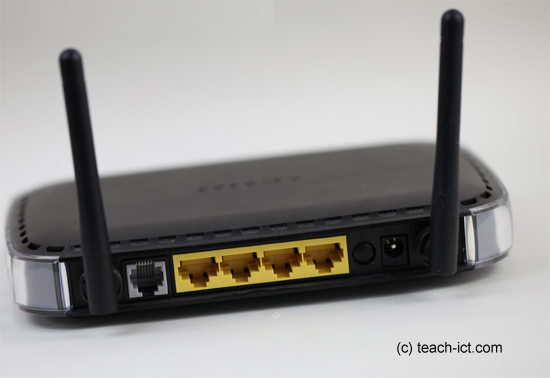8. Wireless Access Points
In the early days of computer networks, all local area networks were hard-wired with dedicated cable. But in recent years an alternative has come along that does not need the client to be hard-wired into the network - the alternative is called 'Wi-Fi'.
If the computer / laptop has wi-fi built into it, then it will search for a 'wireless access point' in order to connect to a network.
The hardware device that allows this is called the 'Wireless Access Point' or WAP.

A WAP device has a number of dedicated radio channels available that a Wi-Fi computer can connect to. All data passing through the radio channel is then fed into the hard-wired network that the WAP device is supporting
Of course some security should be in place for private networks in the form of a security password to allow access.
Wi-Fi does have some disadvantages however:
- It is slower than a dedicated cabled network (54 Mb/s compared to 100-1000 Mb/s)
- It has a limited amount of radio channels and so cannot support hundreds of simultaneous connections.
- It is less secure because it depends on keeping the password secret.
It is excellent though for temporary connections. For instance many coffee shops provide free wireless access to their customers. Also many companies have a wireless access point into their network to allow visiting sales people to log in to the main network for the day.
Schools may have wireless access points to allow students to connect to the school network using a laptop.
Challenge see if you can find out one extra fact on this topic that we haven't already told you
Click on this link: WiFi modem
